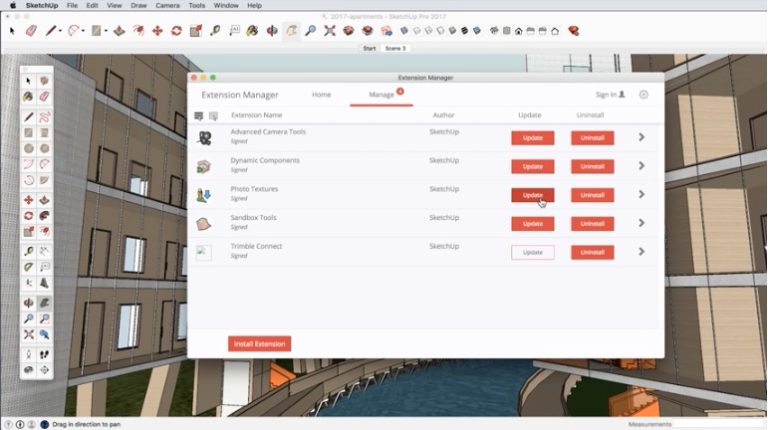

This will reduce the need to create redundant layers tags for objects just to be able to control their visibility. What a pain that would be! In this new update, SketchUp only remembers the hidden state of nested objects, not nested geometry. Repeat this redundant task over and over.
#TRIMBLE SKETCHUP LOGIN UPDATE#
Then activate your next scene, hide them again, update the scene. If SketchUp remembered the hidden state of geometry in your model, that would mean any time you want to permanently hide some edges, you’d have to hide them then update the scene. I’m glad that nested hidden geometry state isn’t saved in each scene, because imagine if you wanted to hide some edges between a floor and wall so they appear seamless. UPDATE : In the 2020.1 update, the Scenes panel has now separated Top Level Hidden Geometry from Hidden Objects Now that SketchUp distinguishes between hidden geometry and hidden objects, when you save a scene with Hidden Geometry & Objects checked, it will save the visibility state of every single object in your model, even if it’s nested! ( Just like before, hidden geometry only gets saved with top-level geometry.) This was really confusing because, in the Scenes panel, it clearly shows Hidden Geometry can be saved in a scene, but never clarified that it can’t save the visibility state of entities nested inside of a group/component. Previously, scenes could only remember the hidden state of top-level entities. In other words, “The things that appear in the Outliner.” Hidden Objects in Scenes Objects are now officially defined as groups, components, and section planes. But if you want, you can turn on Hidden Objects in order to see hidden groups and components in the model. For example, you can hide edges and faces in your model, and turn off Hidden Geometry so they aren’t shown.

Now, you have the ability to toggle hidden objects independently from hidden geometry in the style settings. But I’m not entirely sure I’ll be abandoning scenes altogether… One reason is a major improvement made to how scenes treat hidden geometry and hidden objects. These are some great improvements that will let you create LayOut documents more quickly than before. If you’d like to revert your changes back to the scene’s configuration, you can click the reset button on the property, or for the entire viewport.

Now, you can override specific property sets in the SketchUp Model panel, while letting other property sets remain controlled by the scene assigned to the viewport. (Side Note: I suspect the renaming of SketchUp layers to tags coinciding with being able to control tags inside of LayOut was partly an attempt to avoid confusion when trying to differentiate between LayOut layers and SketchUp layers. The entire SketchUp Model panel has been reconfigured in LayOut as well. This is a step in the right direction, reducing your reliance upon creating scenes in SketchUp ahead of time for LayOut. You can now control the visibility of your SketchUp model layers tags from right inside of LayOut! Just select a viewport, then view the SketchUp Model panel in the Default Tray.


 0 kommentar(er)
0 kommentar(er)
